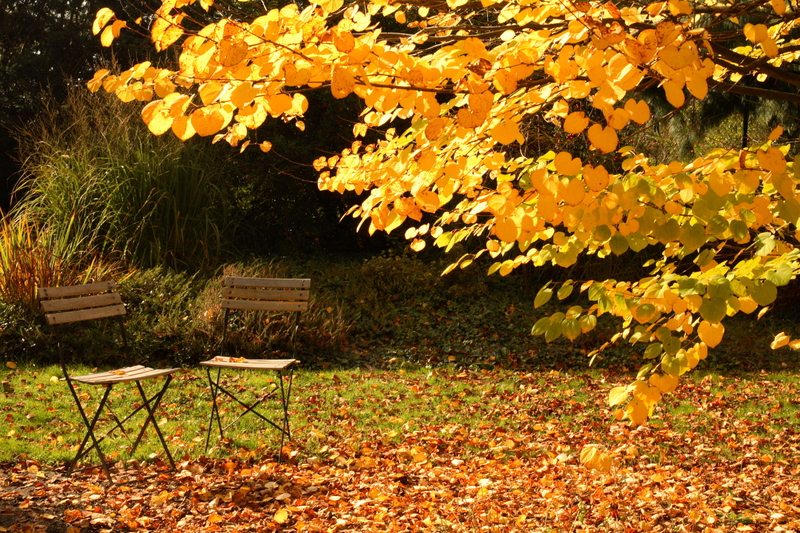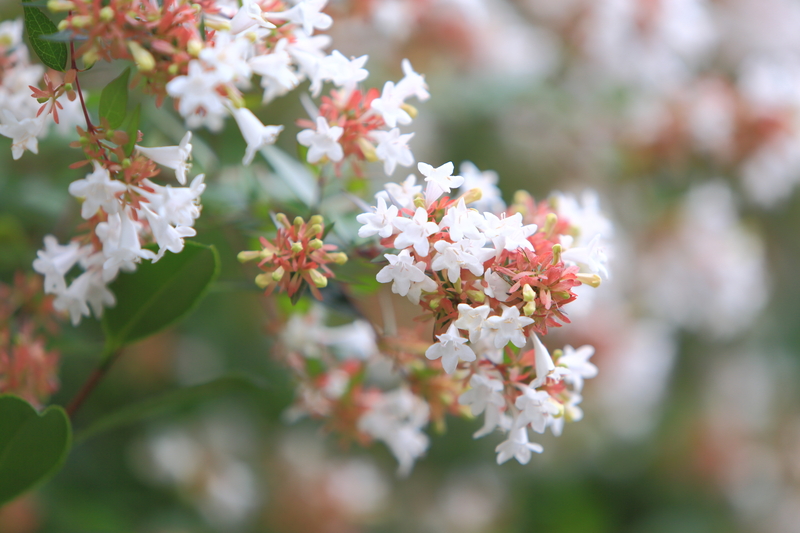Beginner's guide to thriving gardens with 9 essential tips
Posted on 24/05/2025
Beginner's Guide to Thriving Gardens with 9 Essential Tips
Dreaming of a lush, thriving garden but don't know where to start? Whether you have a small balcony, a cozy backyard, or just a few pots on your patio, you too can enjoy the beauty and satisfaction of healthy plants and bountiful blooms. In this comprehensive beginner's guide to thriving gardens, you'll discover 9 essential gardening tips to set you up for success -- even if you've never grown a plant before!
Why Every Beginner Can Achieve a Thriving Garden
Gardening for beginners may seem overwhelming, but with the right approach, anyone can cultivate a flourishing space. A well-tended garden not only enhances your home's curb appeal, but also provides relaxation, exercise, and even delicious homegrown produce.
By understanding the essentials of gardening and following practical advice, you'll be able to grow thriving gardens that reward your efforts all year round.

9 Essential Gardening Tips for Beginners
Ready to transform your empty plot or container into an abundant, thriving garden? These nine proven tips will guide you through the process step by step.
1. Choose the Right Location for Your Thriving Garden
- Observe sun and shade: Most flower and vegetable gardens thrive with at least 6 hours of sunlight per day. Before you start, monitor your potential gardening areas and see where the sun hits throughout the day.
- Consider convenience: The easier it is to access your garden, the more likely you are to give it the care it needs. Pick a spot visible from your window or near your home.
- Tip: For urban gardeners or those with limited space, container gardening allows you to move your plants to optimal sun and shade as needed.
2. Know Your Soil -- The Foundation of Garden Success
- Healthy, living soil is the bedrock of a thriving garden. It provides nutrients, structure, and the right environment for your plants' roots.
- Test your soil using a simple home test kit or by sending a sample to your local extension office. Learn whether your soil is sandy, clay, or loamy--and adjust accordingly.
- Improve poor soil by adding organic matter like compost, aged manure, or peat moss to boost fertility and texture. Well-fed soil produces vigorous, resilient plants.
- Container gardens: Always use a high-quality potting mix designed for the types of plants you wish to grow.
3. Pick the Right Plants for Your Garden's Conditions
- Research which plants thrive in your climate (also known as your USDA hardiness zone) and how much light or shade each variety needs.
- Choose starter plants and seeds that are labeled "easy" or "hardy" for best results for beginners. Lettuce, marigolds, tomatoes, and zinnias are great starter options.
- Combine plants with similar water and sunlight requirements together. This makes maintenance simpler and maximizes your success.
- Tip: Start small! A few pots or a simple raised bed can teach you plenty. You can always expand your thriving garden as you gain confidence.
4. Water Wisely -- Essential Hydration for Thriving Gardens
- One of the most common mistakes for new gardeners is overwatering or underwatering. Most plants need a deep, thorough soak rather than frequent shallow watering.
- Check soil moisture: Stick your finger about an inch into the soil; if it feels dry, it's time to water.
- Best times to water: Early morning or late afternoon helps prevent evaporation and fungal diseases.
- Mulch your soil with straw, bark, or grass clippings to retain moisture, suppress weeds, and regulate temperature.
- Tip: Drip irrigation or soaker hoses help deliver water directly to the roots, saving time and water in your thriving garden.
5. Feed Your Plants -- Simple Fertilizer Basics
- Even the healthiest soil can need a little nutrient boost during key growing periods.
- Start with an all-purpose, slow-release organic fertilizer or use homemade compost to enrich your soil naturally.
- Respect label instructions--more is not better! Over-fertilizing can harm plants and attract pests.
- Feed vegetables and flowers at planting time and again as they begin to flower or fruit. Herbs generally need less feeding.
- Pro tip: Fish emulsion and seaweed extract can provide supplemental micronutrients for spectacular plant health.
6. Mulch and Weed Intelligently for Thriving Plant Beds
- Mulching isn't optional: It helps retain moisture, moderates soil temperature, and drastically reduces weed growth in your beginner's garden.
- Apply 2-3 inches of natural mulch such as shredded leaves, straw, or wood chips around the base of your plants, keeping it away from stems.
- Weed regularly to prevent invasive plants from stealing nutrients and water from your prized flowers or veggies.
- Quick tip: Weeding is much easier after a rain or watering session, when the soil is soft.
7. Monitor and Manage Pests -- Protect Your Thriving Garden
- Learn to spot signs of common garden pests, such as chewed leaves, wilting, or discolored foliage.
- Encourage beneficial insects like ladybugs and lacewings, which naturally keep pest populations under control.
- Manually remove visible pests or try natural remedies like neem oil or insecticidal soap before resorting to chemicals.
- Healthy, well-tended gardens are less likely to suffer from severe pest problems. Vigilance is key to a thriving organic garden.
8. Practice Pruning and Deadheading
- Deadheading (removing spent blooms) encourages many annuals and perennials to keep producing flowers.
- Pruning improves air circulation, shapes plants, removes dead wood, and controls size. Use clean, sharp tools for best results.
- For trees and shrubs, research proper pruning times -- some bloom on new growth, while others need last year's wood.
- Tip: Don't be afraid to trim! Regular maintenance makes your garden look neat and ensures a truly healthy, flourishing garden.
9. Observe, Learn, and Enjoy the Process
- No one becomes a master gardener overnight. Take time to observe your plants, notice what works, and adjust your approach if you encounter challenges.
- Keep a garden journal for notes on planting dates, weather, varieties, and results -- this is invaluable for planning future thriving gardens.
- Don't forget to enjoy the little victories, whether it's your first tomato or a glorious bouquet of blooms. Gardening is as much about the journey as the outcome.
- Ask for help! Local garden centers, online forums, and neighbors are often generous with advice for beginner gardeners.
Extra Tips for Thriving Home Gardens
- Rotate crops and plant families each year to minimize disease and pest pressure.
- Start composting kitchen scraps for sustainable, free fertilizer.
- Use raised beds or vertical gardening techniques if you have limited space.
- Read plant tags and seed packets carefully -- they often contain crucial growing information.
- Don't give up: Even if a plant fails, you're learning lessons that will lead to a more bountiful, thriving garden next time.
Common Beginner Garden Mistakes (and How to Avoid Them)
- Planting too much, too soon: Start small, get familiar with a few plants, and scale up as you gain experience.
- Ignoring your soil: Skipping soil testing or amending often leads to poor results. Healthy soil = happy plants.
- Forgetting to label plants: Early seedlings can look alike. Use waterproof markers or tags for easy identification.
- Neglecting water and weeding: Consistency is key. A little daily attention goes a long way in nurturing thriving gardens.
- Over-fertilizing: More fertilizer doesn't mean better results. Follow instructions and opt for natural amendments when possible.

Conclusion: Your Path to a Flourishing, Thriving Garden Starts Now!
With these 9 essential gardening tips for beginners, you have every tool you need to create a productive, joyful space no matter your experience. Remember: gardening is a journey, best enjoyed with patience and curiosity.
Start small, embrace imperfections, and soon enough, you'll have your own thriving garden--filled with vibrant flowers, delicious vegetables, and the satisfaction of having grown it all yourself. Happy gardening!
Frequently Asked Questions - Gardening for Beginners
- How do I start a thriving garden with no experience? - Begin with easy-to-grow plants, enrich your soil with compost, and water consistently. Start small, learn as you go, and don't be afraid to ask for help!
- What is the best time of year to start a new garden? - Spring and early fall are ideal for most regions, but always check your local climate and frost dates.
- Do I need a lot of space for a successful garden? - Not at all! Many vegetables, herbs, and flowers thrive in containers, hanging baskets, or small raised beds.
- How often should I water my beginner's garden? - Check soil moisture regularly. Most plants prefer a deep weekly soak, but adjust based on your climate and plant types.
- Why are my plants not thriving? - Common causes include poor soil, insufficient light, irregular watering, pests, or overcrowding. Review the essential tips above and make adjustments as needed for a truly thriving garden.
By following these proven strategies for beginner gardeners, your dream of a lush, thriving garden is well within reach. So roll up your sleeves, dig in, and watch your gardening journey bloom!

